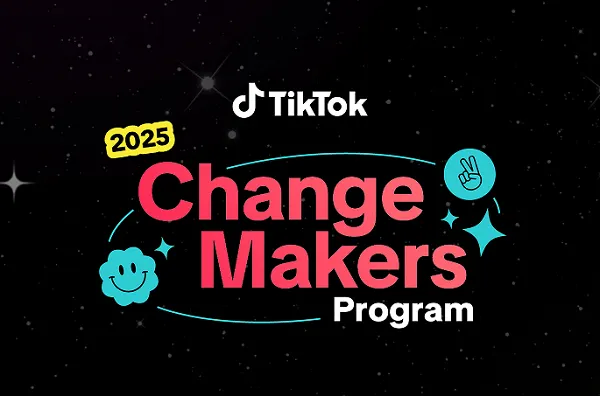Releasing Fascia: A Simple Way to Reduce Tension, Pain, and Disease
“Take care of your body, it’s the only place you have to live.” ~Jim Rohn I hear this happens to so many, but when it happens to you, it’s unsettling. I didn’t know what was going on with me,...


“Take care of your body, it’s the only place you have to live.” ~Jim Rohn
I hear this happens to so many, but when it happens to you, it’s unsettling. I didn’t know what was going on with me, and I wasn’t getting any satisfying answers either.
Most days were good, and I felt fine and went about my regular routine wearing my many hats: mother of two young kids, human mom to three fur babies, a household-manager-of-all-the-things and full-time dental hygienist. And then out of the blue, it could hit me like a ton of bricks… the backache, neck pain, jaw pain, tension headaches, and even migraines.
I would wake up in the morning with tension or pain in my body, but I had no idea how it got there! Sometimes it was pretty intense too, It would drive me bananas because I couldn’t put my finger on the reason why.
Didn’t do any yard work yesterday. Didn’t hurt myself. Didn’t trip or fall. Didn’t shovel snow the last few days either. It was so strange. I had no idea what was going on.
I remember that the first time it happened, I was about thirteen years old. It was a summer morning, and I wasn’t able to get out of bed to go to my babysitting job. Another time, in my late twenties, my lower back seized as I was bent down shaving my legs, so I dropped to the floor unable to get back up. There were many times like these.
When I had one of those unexplained episodes, I would feel off for a few days and then it would settle. Luckily for me, most days I just felt my regular minimal tension at night. It wasn’t intense, but it was enough for me to notice.
Other times, I’d have migraines or tension headaches that would last for days at a time. It wasn’t fun for anyone, including my young family. I also felt guilty and stressed out with my list of errands getting longer by the minute. I wanted to avoid this at all costs because it would stop me in my tracks when it happened, and everyone around me suffered.
During medical visits I was told I had muscle spasms, tension headaches, or migraines. And was told to relax (right!) or prescribed something for the pain or given a topical cream to rub on the affected area. It helped, but I still didn’t understand why it would happen out of the blue like that.
In my circle, I was hearing things like: “Wait till you hit thirty or forty, that’s when all the problems start!” or “Wait ‘til you’re my age!’ or ‘Welcome to the club!” or my favorite one: “You ain’t seen nothing yet!” To be honest, it was upsetting and depressing to hear that things would get worse as I aged.
Ever have an ultrasound, scan, or MRI only to be told that everything looked normal? That it must be muscular, or even worse, it’s all in your head? It’s a very frustrating diagnostic for most people, as they are left feeling puzzled and still looking for answers. They’re hoping to find anything that could help, to alleviate some of the pain and tension. They’ve done many things, but nothing seems to help…
As it turns out, it’s all about fascia!
What is FA-SH-EE-AH? It is a connective tissue in our body. Picture one continuous piece of a three-dimensional spider web, from head to toe. It’s a semi-opaque membrane, thicker in some areas.
This tissue does not only wrap or divide our organs, muscles, and other body parts, like previously thought, but it actually interconnects every single one of our cells, all 100 trillion of them! Fascia is everywhere! It protects us, it supports surrounding tissues, and communicates with our entire being. It is the only system in the body that connects to every other system in our body.
The magic of our precious fascia doesn’t stop here, as it also has a memory! It records our entire life, but it’s the traumatic events—the physical, repetitive, and emotional stresses (every fall, burn, bruise, surgery, repetitive movement), the viruses (hello, Covid!), and infections… plus unprocessed emotions, negative thoughts, limiting beliefs, and unhealthy habits and behaviors—that affect it the most. From the 3rd trimester in the uterus to our last breath, our fascia keeps track and memorizes everything.
Our beautiful body does have the potential to auto-regulate, and so does our fascia. But we live in a world where productivity is a sport, our to-do lists are never-ending, and our over-scheduling is a badge of honor. This absolutely takes a toll on our body and mind! Therefore, our fascia doesn’t always release like it’s supposed to, and it starts accumulating tensions.
Tight fascia, that is unreleased, clamps down on its surrounding tissues and gets worse with time. Left unreleased, it can get rock hard. Plus, since it’s like a 3D blanket, it starts affecting and pulling other parts of the body… just like when you tug or pull on a corner of a blanket, it pulls on the entire thing. The fascia in our body is the exact same!
This is why the root cause of our symptoms may be coming from a completely different place in our body. And it explains why many therapies don’t work, as they treat the location of the symptom and not the cause.
Bound fascia creates havoc on our health and wellness and has a domino effect on our body and mind. It impacts all our cells (every tissue that makes up the muscles, organs, bones/joints, and all the other systems).
As an example, clamped fascia that is tight around and inside an organ (remember, fascia is in every cell) will affect this organ so much that it won’t be able to function properly.
The pain in your neck that keeps coming back, your tight shoulder blades and digestive issues, could all be from tight fascia from that time when you fell off your bike when you were learning to ride at the age of five years old. Your fascia protected you in the fall, but it’s been tight all this time and is now pulling on your 3D fascia blanket.
The TMJ issues you’ve been experiencing, the acid reflux, and reduced range of motion in your shoulder could be from when you had your appendix removed as a child. With scars, we only see a tiny scar on the skin, but inside, it’s an iceberg of adhesion and it’s pulling constantly!
That nagging hip tension that’s been around for ages, the ringing in your left ear, and your weak bladder could all be from your high-risk pregnancy and stressful delivery. Those babies take up a lot of room, and our tissues should go back to their original place, but sometimes they don’t, and that starts pulling too! Not to mention the impact of all that stress of having a high-risk delivery; this too could very well be the root cause of your issues!
Healthy fascia is the missing piece to health and wellness! A holistic approach is needed to release this complex tissue, which impacts us in so many ways. For optimal health, gentle movements are best to release bound fascia and relax your nervous system, which go hand-in-hand.
If your intention is to release your fascia, you’ll want to avoid anything that is too intense or that jacks it up like HIIT, spinning, and marathons.
Other than body work (osteopathy, energy work, massage), walking, swimming, yoga, and meditation are great options that you can do without an appointment. Every bit counts! Here are some things you can add to your daily routine to keep your fascia happy and pliable:
First, stay hydrated! Drink water throughout the day. The general rule of thumb is to drink your weight in pounds, divided by two. That’s the number of ounces your body requires daily to function properly. Therefore, someone that weighs 200 pounds could benefit from drinking 100 ounces of water per day. Some exceptions apply, but for most people this is a good guideline. Remember, we are mostly water, and that includes our fascia!
Stretching is a must! To stretch a muscle, it takes twenty to thirty seconds, but to stretch and release one layer of our dysfunctional fascia, it can take around three to five minutes, sometimes more.
Yoga is a great fascia therapy, as it’s wonderfully designed around fascia lines; for example, downward dog stretches the posterior line of fascia. Thread the needle pose stretches the arm line. Fish pose stretches the anterior line.
Hatha is the style of yoga that most of us think of when we picture yoga. Downward dog, warrior pose, child’s pose, lotus, to name a few poses, are all great options to try.
In yin yoga, we hold the poses longer, about three to five minutes, which is long enough to release the fascia. That’s when all the magic happens! These poses are gentler. As we hold them, we can feel a little flutter or a soft release somewhere else in the body. It’s all connected!
Another kind of yoga that is great for our fascia health is restorative yoga. This one is a very passive yoga done with many props. It’s all about supporting the body and feeling safe. This creates immense healing, as it activates the parasympathetic nervous system. It’s incredibly powerful and utterly relaxing! So, let’s not discredit this type of yoga because it’s more passive than the others. The benefits are exponential!
EFT/Tapping Meditation is also a great option to release tension in our fascia. As we tap on specific acupressure points on meridians in the body (hint: meridian and fascia lines are in the same places!), we release stored unprocessed emotions, limiting beliefs, and negative thought patterns, which all impact our fascia.
It’s an amazing body-mind release technique! Tapping also activates the vagus nerve, promoting rest and relaxation, which is what we want, as the happiness of your fascia depends on the state of your nervous system, and vise-versa.
Fascia health is a journey, and it’s so worth it! Do yourself a favor and start releasing your fascia today. Caring for it has the best return on investment and undeniably impacts your health and well-being. You totally deserve it, and your future self will thank you!
See a typo or inaccuracy? Please contact us so we can fix it!

 Hollif
Hollif 































